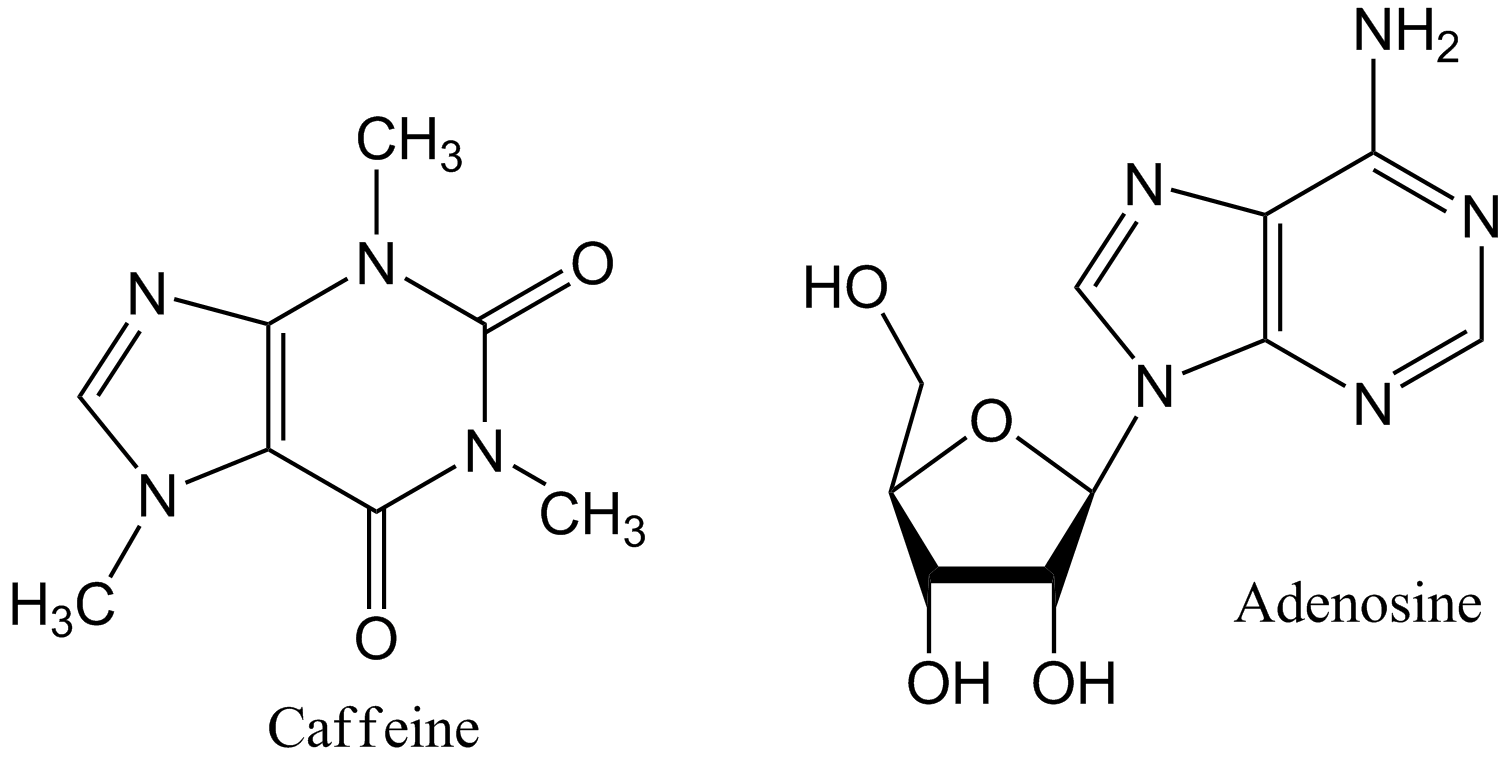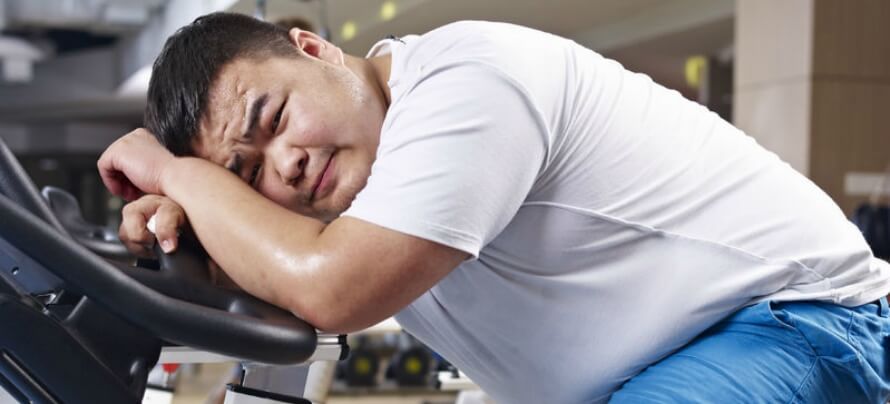Key Takeaways
- Caffeine withdrawal refers to a collection of symptoms that occur when you stop taking caffeine, such as headache, fatigue, and irritability.
- Caffeine withdrawal is real and it can occur after taking small amounts of caffeine, but it’s not as severe as what you’d experience from a hard drug.
- You can minimize your chances of caffeine withdrawal by consuming less than 150 mg of caffeine per day or consuming caffeine on alternate days.
You’ve heard it all before—caffeine is the world’s most widely consumed drug.
Specifically, most adults consume around 300 mg per day (or about three cups of coffee).
Chances are good you’re one of these people, and you’ve been enjoying the benefits of caffeine for quite some time.
If you’ve ever quit taking caffeine, though, then you’ve felt the other shoe drop.
You know—headaches, anxiety, fatigue, nausea, and irritability.
Browse around online, and you’ll find stories just like this, and you’ll hear people say that they’re going through caffeine withdrawal.
Given that the term “withdrawal” is normally reserved for the hard stuff like cocaine, heroin, and meth, could something as innocuous as caffeine cause withdrawal, too, albeit to a lesser extent?
Well, the short story is this:
Caffeine withdrawal is a real phenomena that’s been documented in over 50 experimental studies, and it can occur with as little as 100 mg per day taken for three days in a row.
The good news is that you can reduce the effects of caffeine withdrawal and avoid most of the negative symptoms, but it’s going to take some work unless you just want to go “cold turkey.”
In this article, you’ll learn how caffeine affects your body, what causes caffeine withdrawal, how much caffeine it takes to cause withdrawal, and how to lessen or avoid the symptoms of caffeine withdrawal.
Let’s get started.
- What Is Caffeine and How Does it Work?
- What Is Caffeine Withdrawal?
- Is Caffeine Withdrawal Real?
- How Much Caffeine Will Cause Caffeine Withdrawal?
- How Can I Stop Caffeine Withdrawal?
- The Bottom Line on Caffeine Withdrawal
Table of Contents
+What Is Caffeine and How Does it Work?
Technically known as 1,3,7-trimethylxanthine, caffeine is a central nervous system stimulant found in some plants like coffee and cacao.
Caffeine is considered a drug by the Food and Drug Administration because it has a broad range of psychoactive effects and can produce mild dependence.
In the United States, 85 percent of adults consume caffeine every day, with the vast majority coming from coffee and caffeinated energy drinks.
Based on that, you can see why it’s important to understand how caffeine works, how it affects your body with continued use, and what happens when you stop taking it.
You’ve undoubtedly felt the effects before—increased focus, alertness, and maybe some jitters, but what does it actually do inside your body?
Caffeine works primarily in the central nervous system (aka the brain and spinal cord) by interfering with the effects of adenosine.
Adenosine is a compound produced by the body with many different functions, one of which is to act as a neurotransmitter, or chemical messenger between nerve cells.
When adenosine binds to the adenosine receptor, it signals sleepiness.
Caffeine works by binding to adenosine receptors and preventing the adenosine molecule from doing its job.
By blocking these receptors, caffeine can increase alertness and combat drowsiness by essentially shutting off the “drowsy” signal. Think about it like this: if you jam a key into a lock that doesn’t fit, not only will the lock not open, it blocks the correct key from coming in and doing its job.
That’s what caffeine does.
It’s able to pull this off because caffeine is structurally very similar to adenosine, but not identical, so it doesn’t produce the same effects.
Here’s what the two molecules look like side by side:

That’s not the only thing caffeine does, though.
It also stimulates the release of the neurotransmitters epinephrine and norepinephrine, which promote alertness, focus, and power production. Unlike other substances which act indirectly to produce these neurotransmitters, caffeine directly acts on the adrenal glands to release these compounds. This means that caffeine directly stimulates some of your “fight or flight” mechanisms
Caffeine can also directly influence glucose metabolism which means it has direct metabolic effects. For example, in people with obesity and diabetes, caffeine can actually cause an acute shift in metabolism and impair glucose metabolism when caffeine is consumed with food.
It appears that it also decreases the disposal of glucose acutely in people who are not obese or diabetic, but otherwise sedentary.
Now, this doesn’t mean that caffeine, especially in the form of coffee or tea, is bad for you due to these short-term changes in glucose metabolism, in fact it actually lowers your risk of developing diabetes.
So, what does all of that mean for you?
Well, the three main benefits are:
1. Consuming caffeine before a workout can increase power output. It won’t necessarily increase your deadlift right away, but it will help you push through reps that you might otherwise fail.
Essentially, it helps you go a little harder for a little longer. The current hypothesis is that this may be due to a reduction in pain perception, and mobilization of intramuscular calcium (calcium is what lets your muscles actually contract and do the lifting).
Additionally, caffeine supplementation increases aerobic capacity, probably by helping the body mobilize and burn fatty acids for fuel.
While less likely, it’s also possible that the improvements are related to adrenaline and glucose metabolism.
2. Consuming caffeine can increase your metabolic rate, which could help with fat burning.
Caffeine also increases the thermic effect of food when you eat. Now, while these effects are small, they are very real and can help you burn a small, but meaningful number of calories.
You’ve probably also heard that caffeine selectively increases fat burning, but that’s not the whole story.
While it’s clear that caffeine increases the release of fatty acids into the blood, most of those fatty acids aren’t actually oxidized (burned). Instead, they’re recycled and stored back in fat tissue.
So while caffeine might stimulate some fatty acid oxidation, it isn’t quite as high as most people think it is. In fact, about 75 percent of the fatty acids that are “liberated” end up right back where they started after taking a few laps around your circulatory system.
That being said, there is still a net increase in fat oxidation from caffeine use which can add up over time.
3. Consuming caffeine improves your ability to focus.
The most notable and observable effect of caffeine is its cognitive effects, specifically on alertness and focus. Caffeine has been shown to increase alertness in dozens of studies and also can keep you from falling asleep. It even improves alertness in people who’ve been deprived of sleep for 48 hours.
Caffeine doesn’t necessarily make you smarter, but it helps you focus more intently on your work and avoid distractions. In other words, it helps you stay “in the zone.”
When taken in small amounts, caffeine can also reduce anxiety.
What Is Caffeine Withdrawal?

Caffeine withdrawal refers to a collection of symptoms that occur when regular caffeine consumers stop consuming caffeine. This is the result of a physical dependence that the body develops from sustained exposure to caffeine.
Depending on who you ask, the symptoms can border on those that you’d expect from a hard drug, or they can be relatively mild.
Generally, it’s said that the only way to make the symptoms go away is to consume caffeine or wait it out.
Is Caffeine Withdrawal Real?
People often say that caffeine withdrawal isn’t real withdrawal, and some even say that the whole thing is made up.
To see if that’s true, we first need to understand what the term “withdrawal” really means.
According to the Oxford English Dictionary, “withdrawal” means “The process of ceasing to take an addictive drug.”
“Withdrawal symptoms” are “The unpleasant physical reaction that accompanies the process of ceasing to take an addictive drug.”
So, does caffeine qualify as “addictive,” and can it cause withdrawal?
Well, the short answer is “yes” and “yes.”
One of the best studies on caffeine withdrawal occurred in the early 1990’s. In this randomized, placebo-controlled trial, 62 people who consumed 2 to 3 cups of coffee per day (235 mg of caffeine) stopped cold turkey.
The result?
Half of the people reported moderate to severe headaches after they stopped taking caffeine, and everyone was more likely to experience greater depression, anxiety, irritability, and fatigue.
Other research has found much the same thing. When people stop drinking caffeine, about half of them will experience caffeine withdrawal and will seek out caffeine to make it go away.
In a review of 66 studies on caffeine withdrawal, researchers identified nine symptoms as common signs of caffeine withdrawal:
- Headache
- Fatigue
- Decreased energy
- Drowsiness
- Lower contentedness
- Depressed mood
- Difficulty concentrating
- Irritability
- Foggy-headedness
Similar to other drugs, the review also found that symptoms generally set in soon after about 24 hours without caffeine.
The single most common and severe symptom of caffeine withdrawal is headache, which is primarily caused by changes in adenosine production.
When people consume large amounts of caffeine, blood levels of adenosine rise, and this dilates the blood vessels in the head.
When you stop taking caffeine, adenosine levels fall and the blood vessels shrink, which can cause severe and prolonged headaches.
How Much Caffeine Will Cause Caffeine Withdrawal?
Most people will experience caffeine withdrawal if they suddenly stop taking large amounts of caffeine (e.g. several large coffees per day).
What many people don’t know, is that doses as low as 100 mg per day can cause slight dependence and subsequent caffeine withdrawal.
It also doesn’t take long for these effects to kick in.
Caffeine dependence can develop after only three days of consuming 300 mg per day (although it might take slightly longer than that with a smaller dose).
How Can I Stop Caffeine Withdrawal?

Caffeine withdrawal is real, it sucks, and it can happen with even small amounts of caffeine over a few days.
That’s the bad news. The good news is that you can avoid these negative side effects by sticking to three principles:
1. Limit your daily caffeine consumption.
The single best way to stop caffeine withdrawal is to not become dependant on it in the first place.
And no, that doesn’t mean you have to abstain altogether.
Instead, you can . . .
- Consume no more than ~150 mg per day as a general rule (one or two 8-ounce coffees).
- Consume caffeine on alternating days, so you aren’t exposed to it daily.
For example, you could drink caffeine only on Monday, Wednesday, Friday, and Sunday, and Tuesday, Thursday, Saturday the following week.
(Using a pre-workout without caffeine can also help in this regard.)
2. Gradually reduce your caffeine intake over several weeks.
This isn’t a very well scientifically supported method, but it makes logical sense and most people find it helpful (including me).
Here’s what to do:
Instead of cutting off all caffeine intake, you consume slightly less caffeine over a period of time.
You could do this by cutting your intake every day (such as drinking 10 percent less coffee every day), or by cutting it every week (drinking 10 percent less the first week, 20 percent less the second, and so on).
3. Go cold turkey and tough it out.
For the brave at heart, this is still a viable option.
Just stop taking any form of caffeine for at least two weeks, get plenty of sleep, and if the headaches get too bad, take some ibuprofen.
The worst of the symptoms will be over after about a week, and you should be firing on all cylinders after about two weeks.
The Bottom Line on Caffeine Withdrawal
Caffeine withdrawal, while sometimes overblown, is a very real phenomena that causes headache, fatigue, anxiety, depressive symptoms, drowsiness, and other problems.
It doesn’t take much caffeine to cause these effects, either.
Caffeine withdrawal can develop after only a few days of drinking a few hundred mg of caffeine per day, or about one or two cups of coffee.
You can prevent caffeine withdrawal by following these three steps:
- Limit you daily caffeine consumption.
- Gradually reduce your caffeine intake over several weeks.
- Go cold turkey and tough it out.
I prefer the first two options, but if you decide to go with the last one, then you can expect to be back to normal after about two weeks of feeling off keel.










